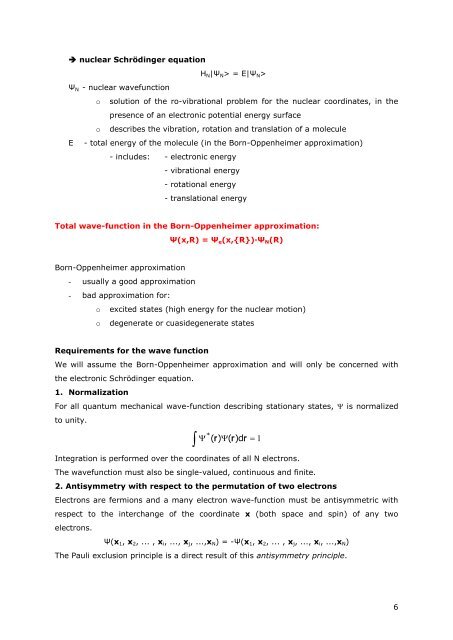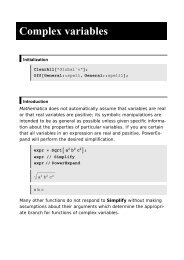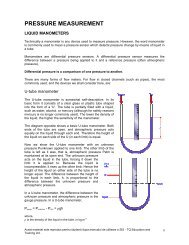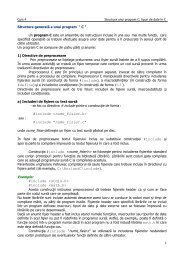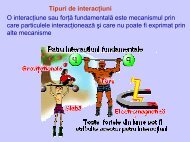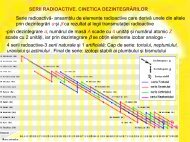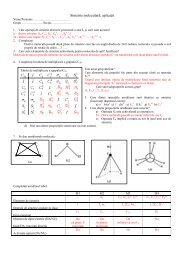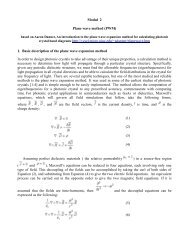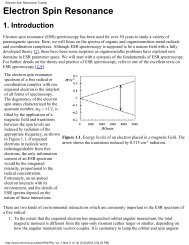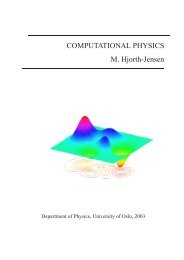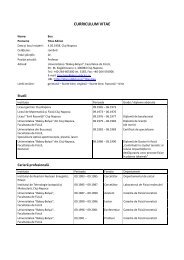Atomic units; Molecular Hamiltonian; Born-Oppenheimer ...
Atomic units; Molecular Hamiltonian; Born-Oppenheimer ...
Atomic units; Molecular Hamiltonian; Born-Oppenheimer ...
Create successful ePaper yourself
Turn your PDF publications into a flip-book with our unique Google optimized e-Paper software.
nuclear Schrödinger equation<br />
ΨN - nuclear wavefunction<br />
HN|ΨN> = E|ΨN><br />
o solution of the ro-vibrational problem for the nuclear coordinates, in the<br />
presence of an electronic potential energy surface<br />
o describes the vibration, rotation and translation of a molecule<br />
E - total energy of the molecule (in the <strong>Born</strong>-<strong>Oppenheimer</strong> approximation)<br />
- includes: - electronic energy<br />
- vibrational energy<br />
- rotational energy<br />
- translational energy<br />
Total wave-function in the <strong>Born</strong>-<strong>Oppenheimer</strong> approximation:<br />
<strong>Born</strong>-<strong>Oppenheimer</strong> approximation<br />
- usually a good approximation<br />
- bad approximation for:<br />
Ψ(x,R) = Ψe(x,{R})·ΨN(R)<br />
o excited states (high energy for the nuclear motion)<br />
o degenerate or cuasidegenerate states<br />
Requirements for the wave function<br />
We will assume the <strong>Born</strong>-<strong>Oppenheimer</strong> approximation and will only be concerned with<br />
the electronic Schrödinger equation.<br />
1. Normalization<br />
For all quantum mechanical wave-function describing stationary states, is normalized<br />
to unity.<br />
<br />
( r) (<br />
r)<br />
dr<br />
1<br />
Integration is performed over the coordinates of all N electrons.<br />
The wavefunction must also be single-valued, continuous and finite.<br />
2. Antisymmetry with respect to the permutation of two electrons<br />
*<br />
Electrons are fermions and a many electron wave-function must be antisymmetric with<br />
respect to the interchange of the coordinate x (both space and spin) of any two<br />
electrons.<br />
Ψ(x1, x2, ... , xi, ..., xj, ...,xN) = -Ψ(x1, x2, ... , xj, ..., xi, ...,xN)<br />
The Pauli exclusion principle is a direct result of this antisymmetry principle.<br />
6


